Conditioned Media from Human
Umbilical Cord Blood-derived Stem Cell
Confirm
This page is intended to provide information to those involved in medical institutions,
cosmetics or health food industries, and those engaged in related business.
It is not intended to provide information to general consumers.
Are you involved in medical institutions, cosmetics,
health food industries,or any related business?
- NO
- YES
Conditioned Media from Human
Umbilical Cord Blood-derived Stem Cell

Beauty serum combined conditioned media from human umbilical cord blood-derived stem cell

Conditioned Media from Human Umbilical Cord Blood-derive
Stem Cell
Since human cord blood-derived stem cells are young stem cells of a newborn baby, they are known to be more active and proliferative than adult stem cells of fat, dental pulp, bone marrow, and so on. Therefore, the growth factors and cytokines produced are abundant.
Human umbilical cord blood-derived stem cell conditioned media is obtained by separating and culturing mesenchymal stem cells from umbilical cord blood that has passed strict inspection standards at a research facility (Kang Stem BioTech. Ltd), and sterilizing and removing the cells and impurities.
Human umbilical cord blood-derived stem cell conditioned media contains abundant growth factors and cytokines, and particularly umbilical cord blood-derived conditioned media contains 2 to 8 times as much adipose-derived growth factors.

The growth factor in human umbilical cord blood is
more than twice as much as in adipose!
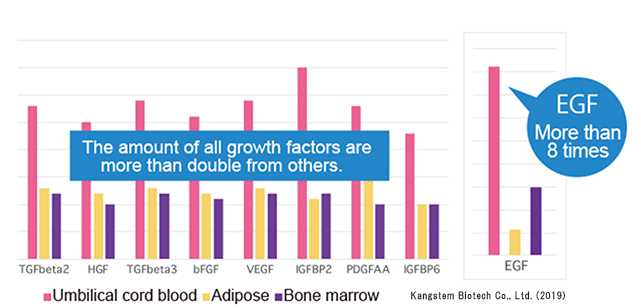

Instruction of
Growth Factor
Growth factor (regeneration factor /cytokine) is a general term for proteins that activate cells. It has an effect of repairing inflammation and wounds and promotes improvement of skin cells and skin function.
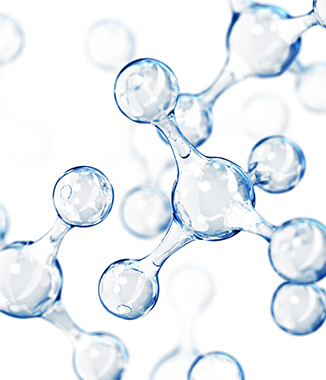
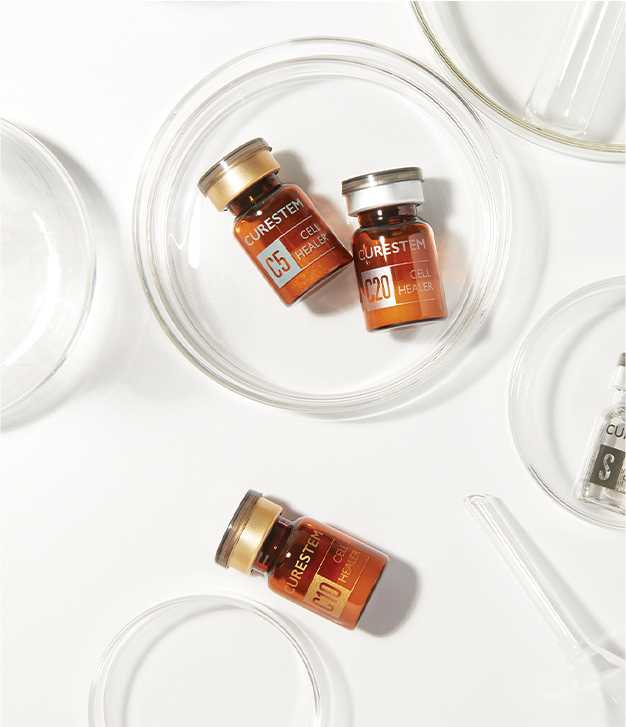
1. EGF<More than 8 times from adipose-derived.>
Epidermal Growth Factor: the growth factor of epithelium which advances epidermal cell growth and skin restoration.
It signals the proliferation of epidermal cells and promotes turnover.
2. TGF-beta
Promotes collagen growth and anti-inflammatory effect.
3. HGF
Acts on epithelial cells, promotes cell proliferation and tissue repair.
4. IGFBP2,IGFBP6
Insulin-like growth factor-binding protein which promotes cell growth and creates new skin.
5. PDGF-AA
Platelet-derived growth factor which promotes skin regeneration and repair by promoting fibroblast proliferation.
6. VEGF
Activate the function of vascular endothelial cells to deliver necessary nutrients to the skin through capillaries.
Proliferation capacity of stem cells
Human umbilical cord blood-derived is the most active.
More than 4 times of the adipose-derived!
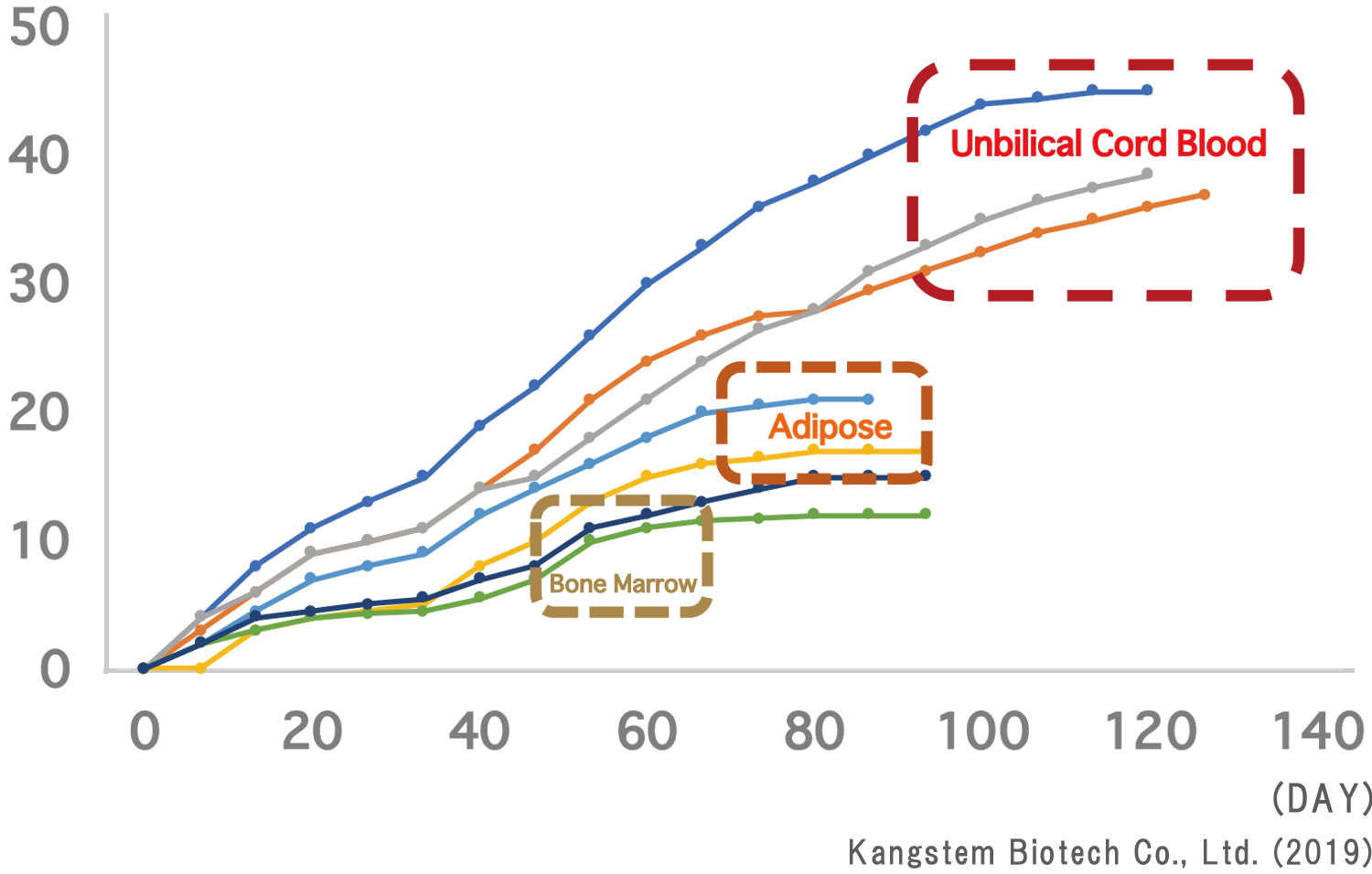
Advances the synthesis of proteins that make the skin
Expression of substances that make the skin (Collagen I&Ⅲ)
Increasing expression level of collagen I&Ⅲ
Collagen Synthesis I: Increased by about 250%
Collagen Synthesis Ⅲ: Increased by about 170%

*Human umbilical cord blood-derived stem cell conditioned media 5% concentration is applied at 0.5% contrast.
Kangstem Biotech Co., Ltd. (2019)

What is Growth Factor?
It is a protein group that makes cells to grow. When a growth factor is taken up by a receptor on the cell membrane, information is transmitted to the nucleus, which urges cell growth and metabolism. It is known that the amount of growth factor secretion decreases by ages.
Relationship between keys and keyholes
The relationship between growth factors and receptors is biologically compared to the relationship between "keys and keyholes." To activate the human receptor, it is important to affix a regeneration factor (keys) to the receptor (keyholes) that fits perfectly. Thus it is essential to use the components of human-derived stem cell culture media, comparing with animal-derived or plant-derived.
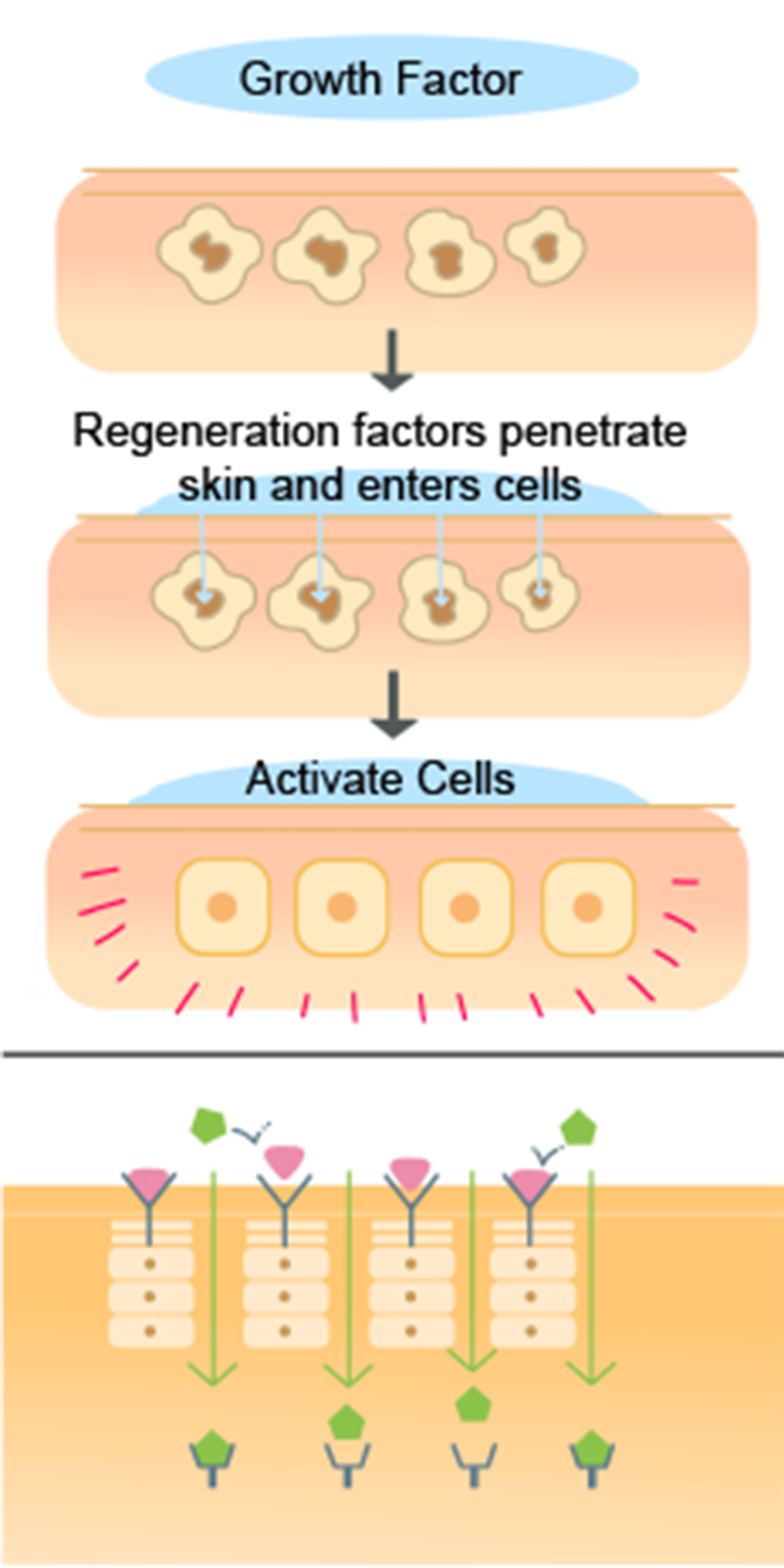
To activate the human receptor, a regenerating factor (key) that fits the receptor (keyhole) exactly is needed.

GDF11 Featured as a Rejuvenating Factor
Three studies to demonstrate rejuvenation of memory, muscle strength, heart function, blood vessels, stamina, and olfactory function were published simultaneously by “Nature Medicine” and “Science.” Since GDF11 injection showed the same effect as parabiosis, it is noted that GDF11 as a rejuvenation factor. *1
Human umbilical cord blood-derived stem cell culture media containing a large amount of GDF11 were shown to be suitable for facilitating a regeneration of aged skin. *2
※1 Mayak et al., 2010; Katsimpardi et al., 2014; Sinha et al., 2014; Hall, 2014; Kaiser, 2014
※2 Jolanta et al., 2019 PLOS ONE, Growth differentiation factor 11 (GDF11) has pronounced effects on skin biology

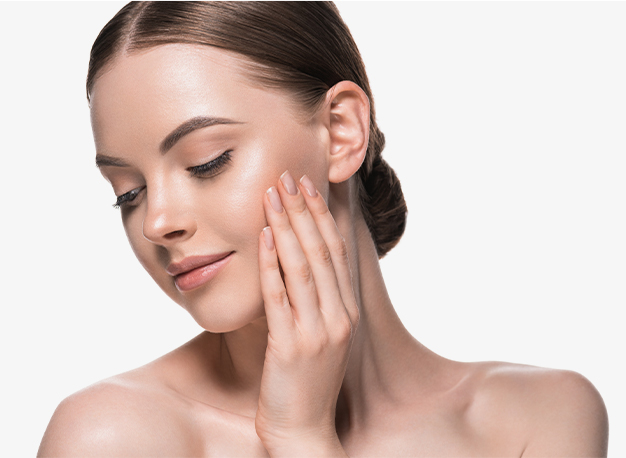
Umbilical cord blood showed 60 times higher GDF11 expression than adipose and bone marrow stem cell culture medium.

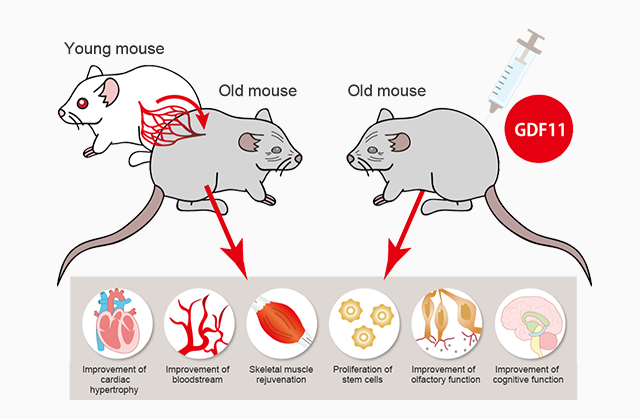
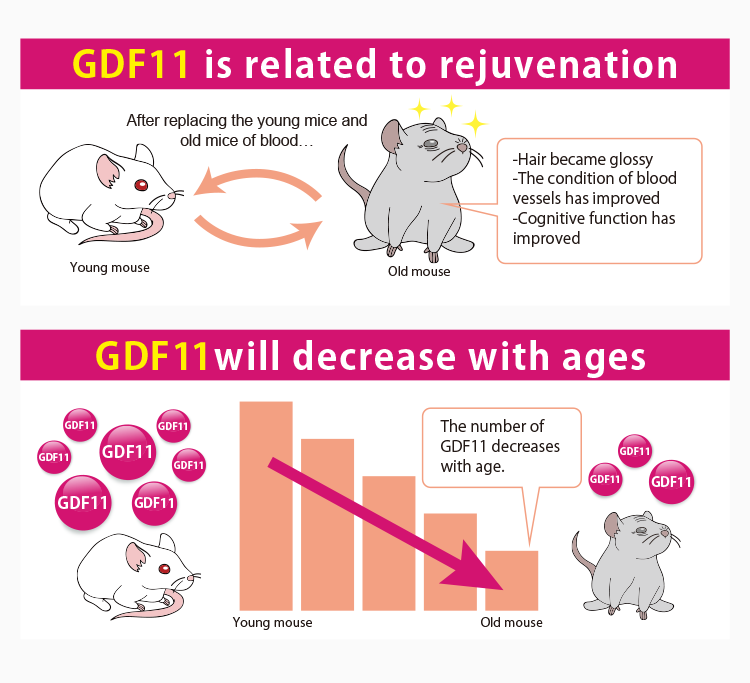

Thesis Related to GDF11
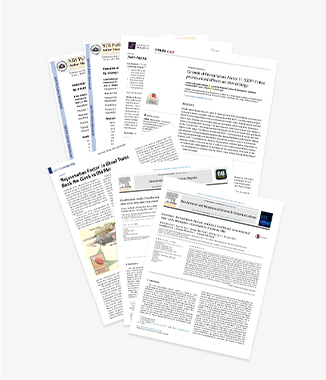

- Yoon-Jin Kim et al., Exosomes derived from human umbilical cord blood mesenchymal stem cells stimulates rejuvenation of human skin(2017)

- Yoon-Jin Kim et al ., Conditioned media from human umbilical cord blood-derived mesenchymal T stem cells stimulate rejuvenation function in human skin (2018)
GDF11 is the TGF-β superfamily of proteins, which is a multifunctional cytokine that regulates cell proliferation and differentiation.
The 2014’s finding show that GDF11 has rejuvenation properties with remarkable effects on the cardiovascular system, brain, skeletal muscle, and skeleton of mice. At this time, by examining the impact on human aged skin, it was found to have a great result on the production of dermal matrix components in human skin. GDF11 is supposed to contribute to the rejuvenation of human skin.
Additionally, another experiment was conducted by using human skin fibroblasts and 3D skin equivalents. In the group of rGDF11 was added, the production of procollagen I after 48 hours was increased by up to about 50%, and the production of hyaluronic acid was increased by 30%. On the contrary, the production of melanin was reduced by 30%.
The inflammatory cytokine IL-1β, one of the causes of inflammation was also downregulated.
This work has shown that the human umbilical cord blood-derived stem cell conditioned media containing GDF11 is suitable for promoting the rejuvenation of aged skin.

Exosome Mediated
Intercellular Transport
Various growth factors exist as exosomes in the conditioned media of human umbilical cord blood-derived stem cells. Exosomes are key roles of transmitting to cells containing regenerating factors and cytokines in 40 nm to 160 nm fine particles.
The exosomes contained in Conditioned Media from Human Umbilical Cord Blood-derived Stem Cell are smaller in size and uniformity, compared to adipose and fibroblast culture media, and the amount of them is large. Thus it has been reported that exosomes reach the dermal layer within 18 hours.
The human umbilical cord blood-derived stem cell contains the smallest and uniformity of exosomes.
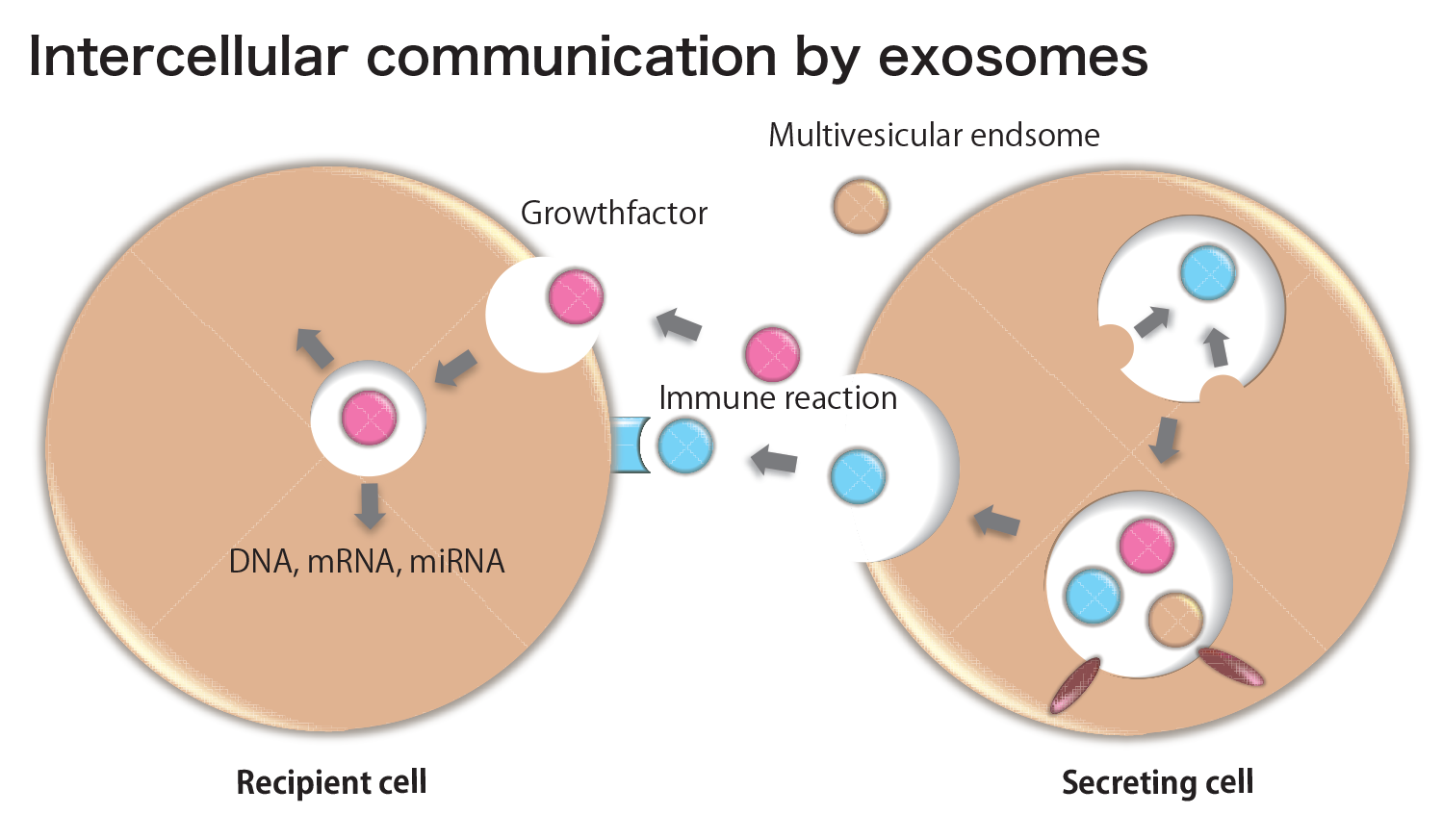

It was found that exosomes contained in the human umbilical cord blood-derived stem cell culture solution were distributed in the center of 50 nm to 150 nm and were smaller in size and uniform as compared with those derived from adipose-derived fibroblasts.
Exosomes in the human umbilical cord blood-derived stem cell culture solution reach to the dermis layer after 18 hours.
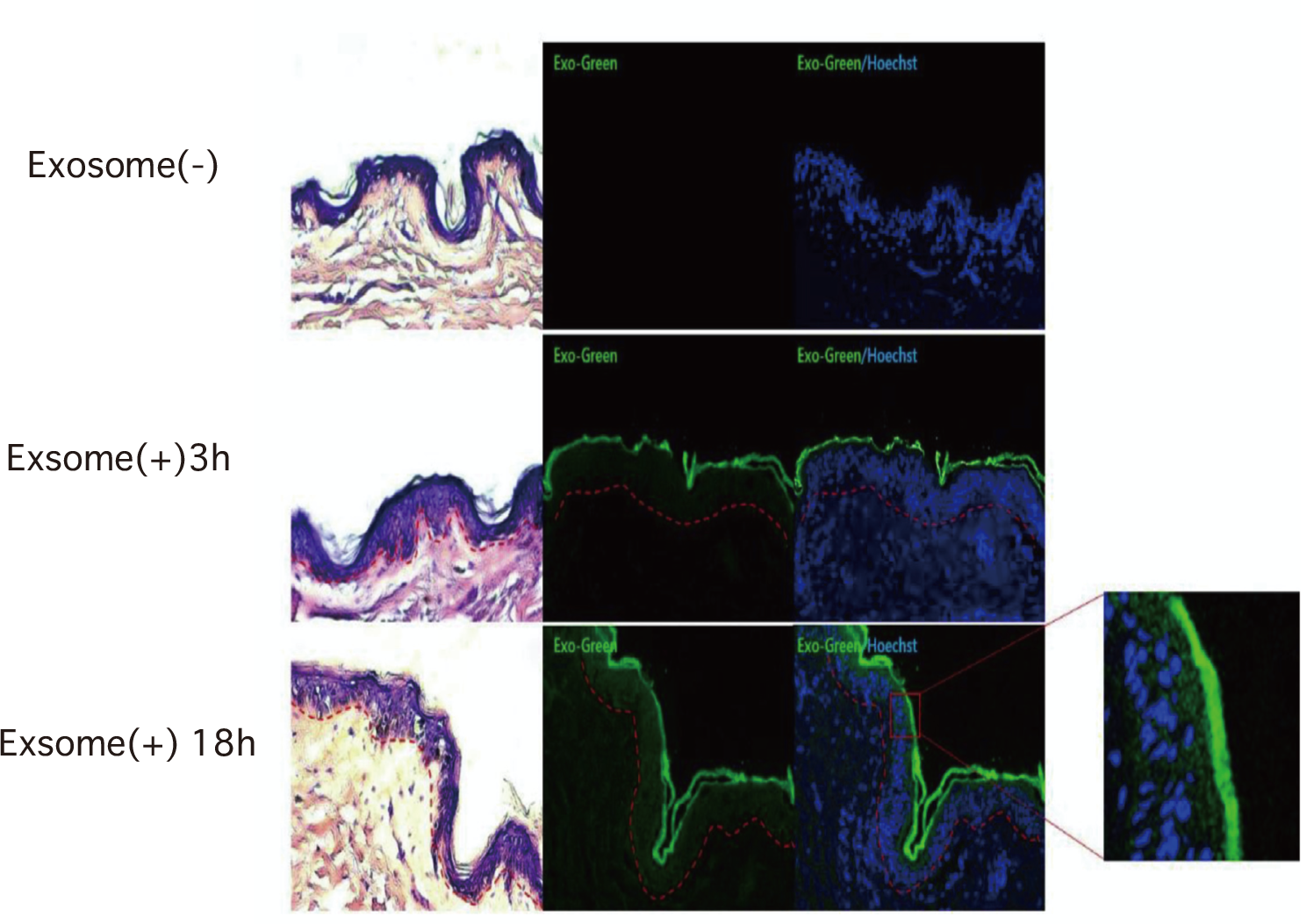
[Cited paper]
Exosomes derived from human umbilical cord blood mesenchymal stem cells stimulates
rejuvenation of human skin // Biochemical and Biophysical Research Communications 493 (2017) 1102e1108

Viral clearance study
“Conditioned Media from Human Umbilical Cord Blood-derived Stem Cell” provided by Future Cell Japan Co., Ltd. carried out virus inactivation treatment and viral clearance studies in accordance with Japanese laws and standards. You can use it safely.



